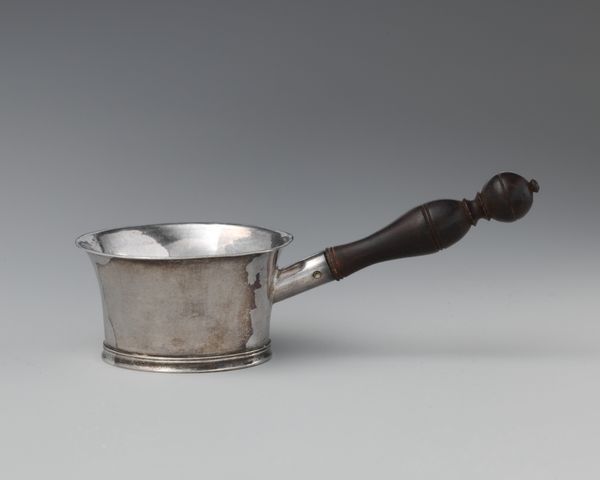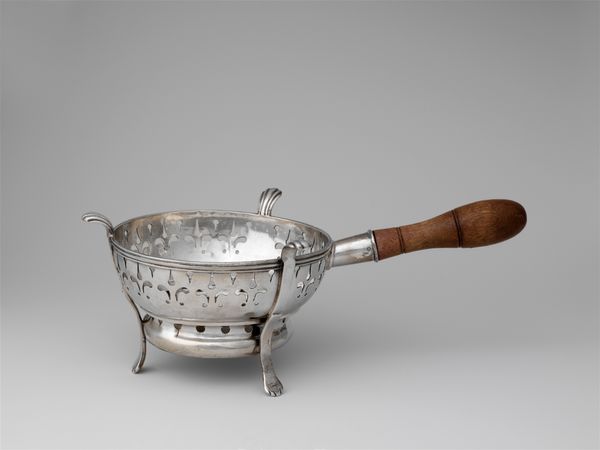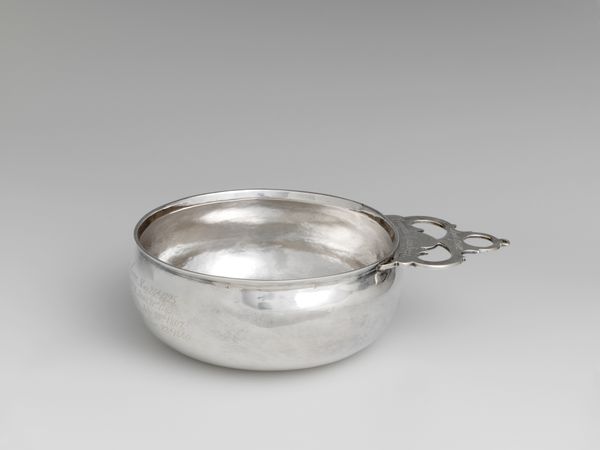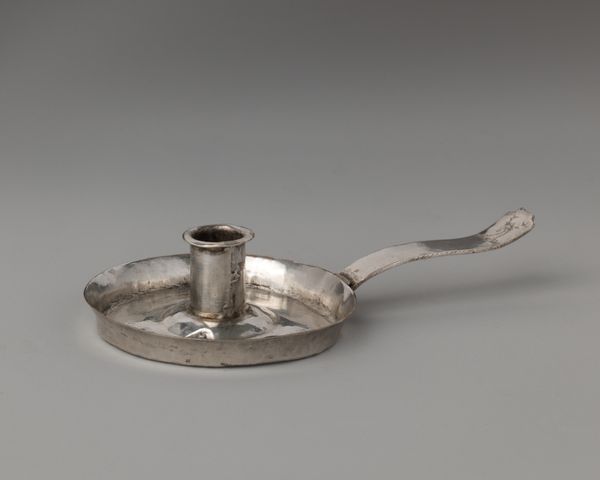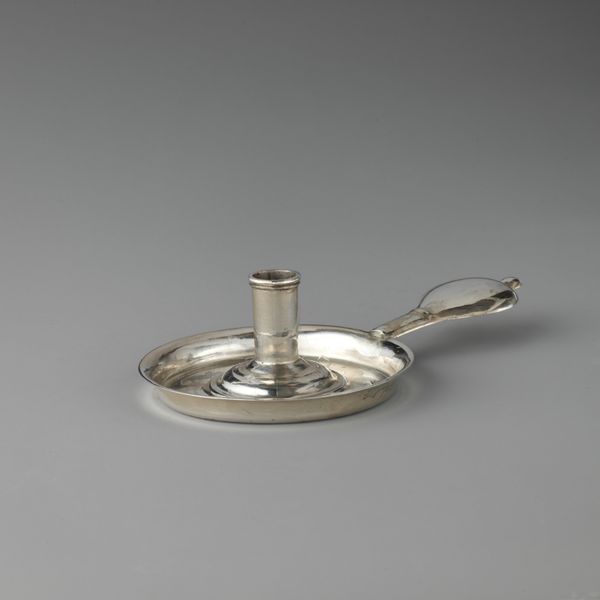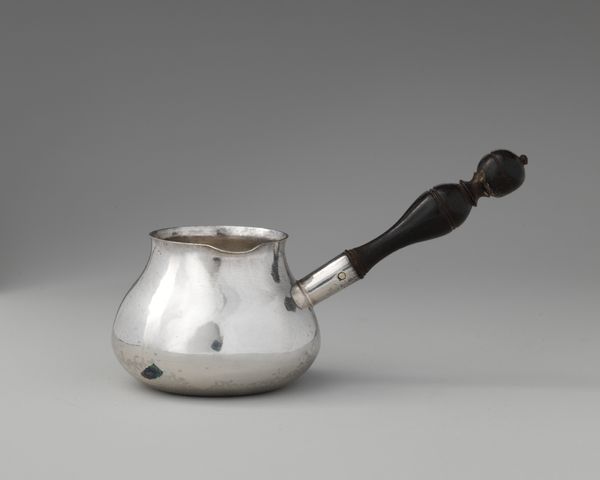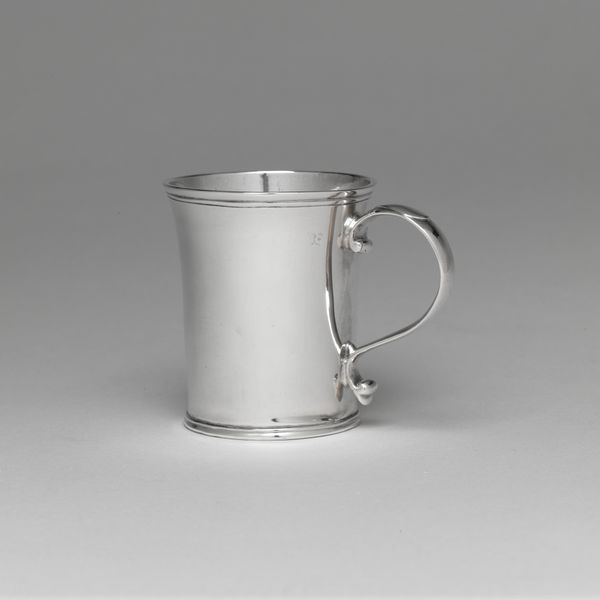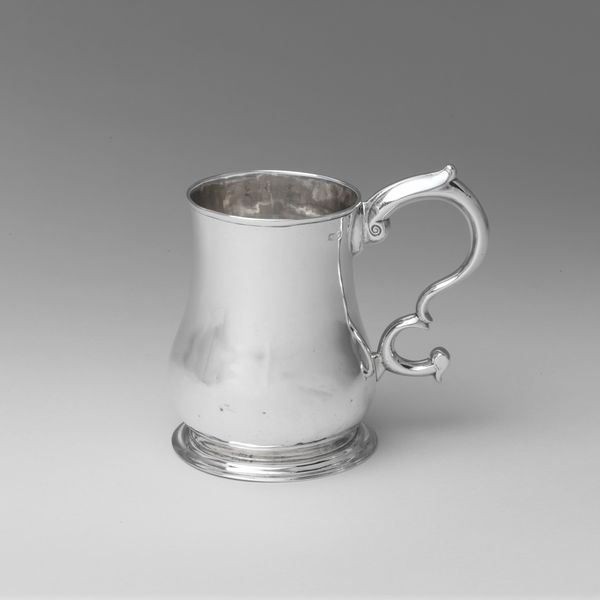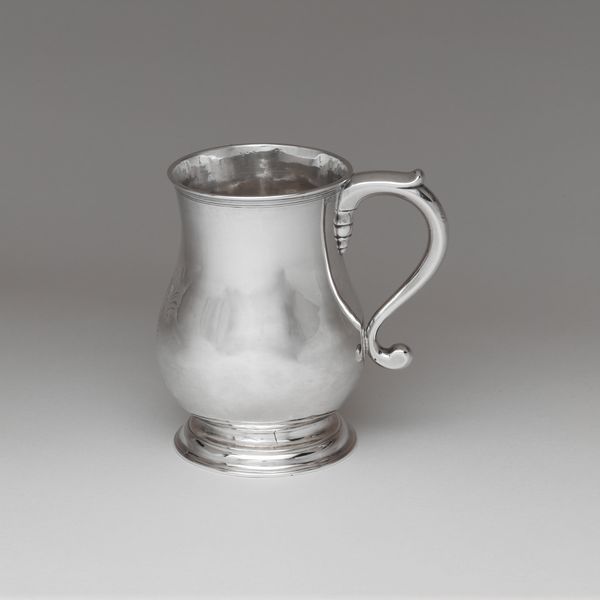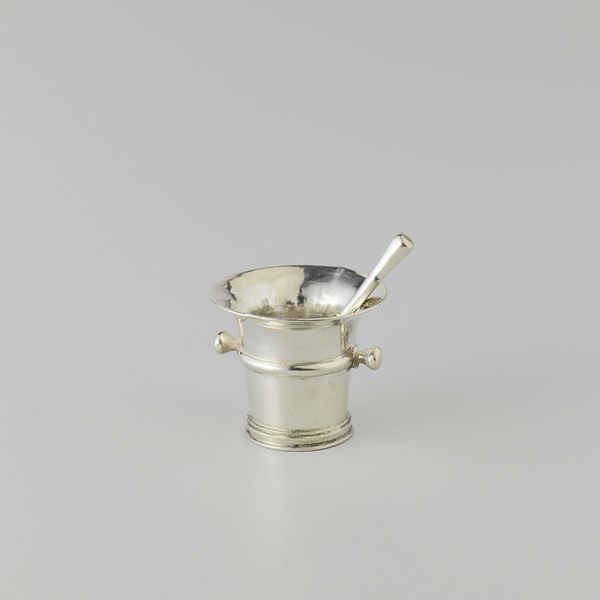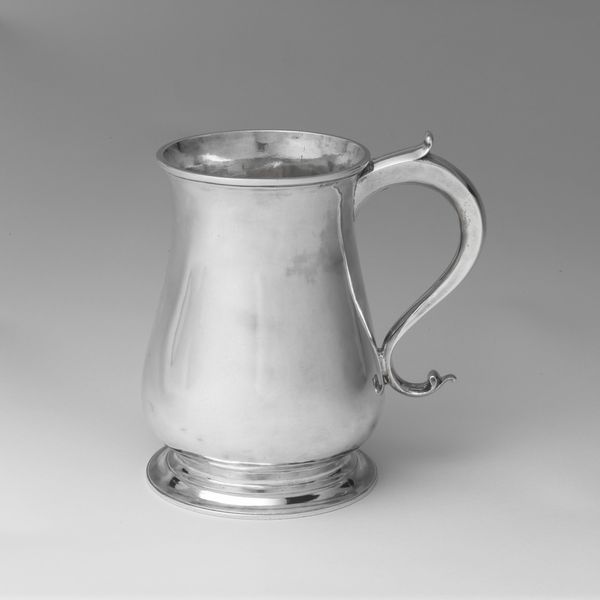
silver, metal, metalwork-silver, sculpture, wood
#
silver
#
metal
#
metalwork-silver
#
sculpture
#
wood
#
decorative-art
Dimensions: Overall: 2 5/8 × 7 7/8 × 2 1/2 in. (6.7 × 20 × 6.4 cm)
Copyright: Public Domain
Editor: Here we have a "Toddy Warmer" crafted between 1766 and 1767, maker unknown, a simple yet elegant object. It’s primarily made of silver with a wooden handle. It strikes me as understated luxury; functional, but definitely possessing a refined air. How do you interpret its significance? Curator: Its apparent simplicity belies its social and political context. We see an object meant for warming alcoholic beverages, likely enjoyed by those with means during a period rife with social stratification. Consider the materials – silver and wood – the craftsmanship involved would indicate privilege and leisure, think about what it would mean to have a hot drink in times of inequality, where many people don't have access to such commodity. What can an everyday object tell us about class, access, and even global trade at the time? Editor: So, the very act of enjoying a toddy, made possible by this object, speaks to a specific societal position? It’s almost a symbol, isn't it? Curator: Precisely! The object itself becomes a quiet participant in the larger dialogues around power and access. Moreover, who might have produced such an object? Whose labor was essential to its existence, yet remained unacknowledged and unpaid? Who had to serve this beverage to the upper class while the concept of human rights remained a notion and wasn't a reality yet? It forces us to question the silences surrounding objects, whose narratives are often omitted. Editor: It’s fascinating how a simple object can reveal so much about a society. Curator: Indeed. It challenges us to consider art history not just as the study of aesthetics, but as a lens through which we can understand power dynamics and social realities across time. What new awareness does that understanding bring?
Comments
No comments
Be the first to comment and join the conversation on the ultimate creative platform.

